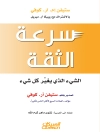Efficiency in Learning offers a road map of the most effective ways to use the three fundamental communication of training: visuals, written text, and audio. Regardless of how you are delivering your training materials–in the classroom, in print, by synchronous or asynchronous media–the book’s methods are easily applied to your lesson presentations, handouts, reference guides, or e-learning screens. Designed to be a down-to-earth resource for all instructional professionals, Efficiency in Learning’s guidelines are clearly illustrated with real-world examples.
Inhoudsopgave
Contents of the CD-ROM.
Acknowledgments.
Introduction.
PART ONE. AN INTRODUCTION TO EFFICIENCY IN LEARNING.
1. Cognitive Load and Efficiency in Learning.
2. The Psychology of Efficiency.
PART TWO. BASIC GUIDELINES FOR MANAGING (IRRELEVANT)COGNITIVE LOAD.
3. Use Visuals and Audio Narration to Exploit Working Memory Resources.
4. Focus Attention and Avoid Split Attention.
5. Weed Your Training to Manage Limited Working Memory Capacity.
6. Provide External Memory Support to Reduce Working Memory Load.
7. Use Segmenting, Sequencing, and Learner Pacing to Impose Content Gradually.
8. Transition from Worked Examples to Practice to Impose Mental Work Gradually.
PART THREE. INSTRUCTIONAL GUIDELINES FOR IMPOSING RELEVANTCOGNITIVE LOAD.
9. Put Working Memory to Work with Germane Load.
PART FOUR. TAILORING INSTRUCTION TO LEARNEREXPERTISE.
10. Accommodate Differences in Learner Expertise.
11. Use Rapid Testing to Adapt e-Learning to Learner Expertise.
PART FIVE. COGNITIVE LOAD THEORY IN PERSPECTIVE.
12. Applying Cognitive Load Theory.
13. The Evolution of Cognitive Load Theory: A Personal Perspective by John Sweller.
Appendix: All About the Numbers.
Glossary.
References.
About the Authors.
Index.
List of Figures and Tables.
How to Use the CD-ROM.
Over de auteur
Ruth Clark is a recognized specialist in instructionaldesign and technical training. She holds a doctorate in Educational Psychology and Instructional Technology from the University of Southern California. Prior to founding CLARK Training& Consulting, she served as training manager for Southern California Edison. Dr. Clark is a past president of the International Society for Performance Improvement (ISPI) and authorof the best-selling e-Learning and the Science of Instruction and Building Expertise, both of which werebestowed the Best Communication Award from ISPI.
John Sweller is the founder of Cognitive Load Theory andit’s most ardent researcher and advocate. The Web of Sciencerecords that his work has been cited on over 1, 500 occasions –with a rapidly increasing citation rate. He has been published innearly 70 refereed journals and is the author of the seminal Instructional Design in Technical Areas. In recentyears he has further developed general cognitive theory in the hopethat this development can lead to further instructionalapplications. He has been a Fellow of the Academy of Social Sciences of Australia since 1993. He currently teaches at the School of Education at the University of New South Wales. He livesin Sydney, Australia.
Frank Nguyen, currently the e-Learning Technology Managerfor the Intel e Business Training group, is responsible forproviding tools and processes to enable online learning for 100+training developers and 45, 000 employees worldwide. Prior to Intel, Frank worked as a systems engineer for a national computerdistributor and built automation systems for several Fortunate 500companies. Frank is currently a doctoral student in Educational Technology at Arizona State University focusing on theconvergence of e Learning and electronic performance support systems(EPSS).












